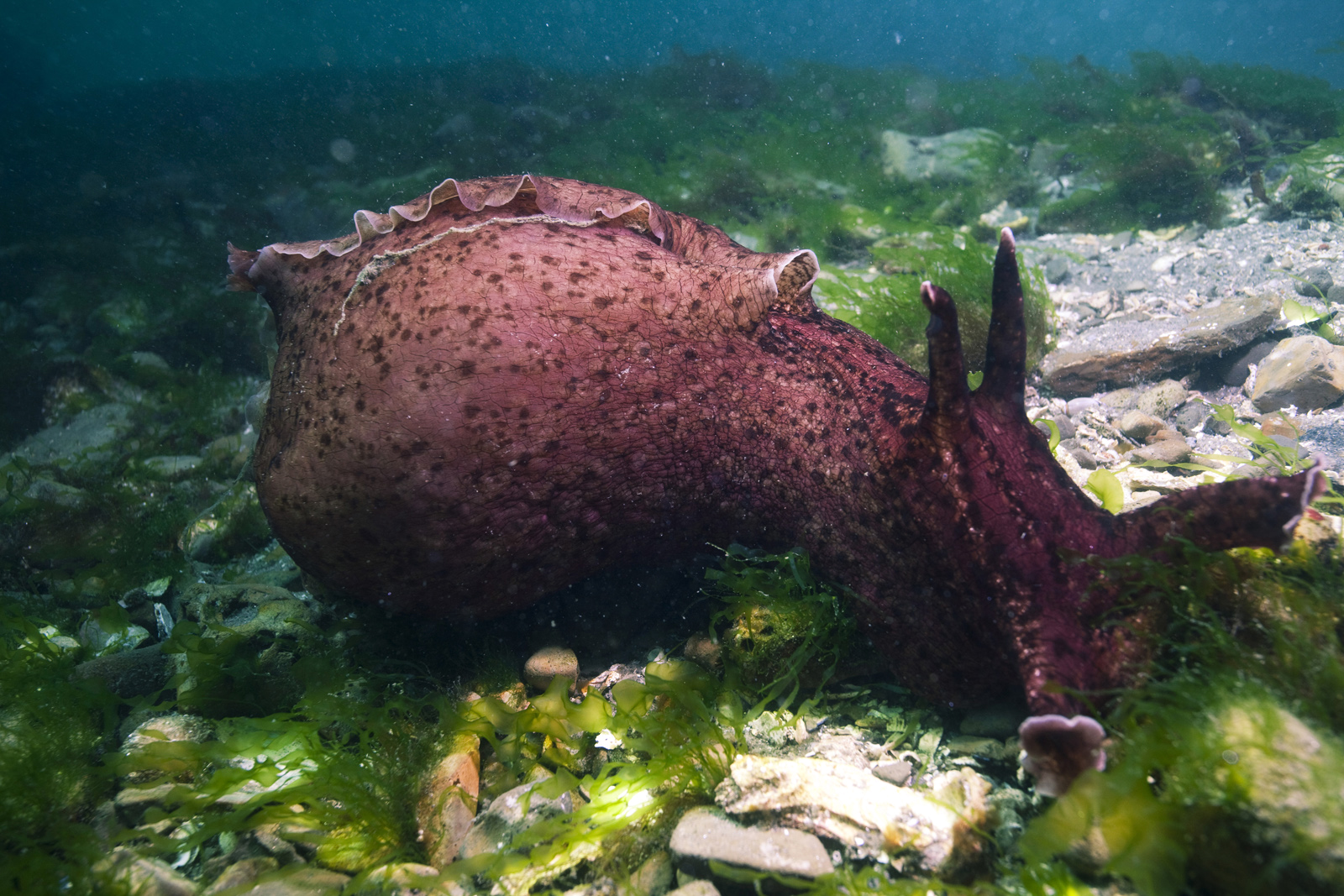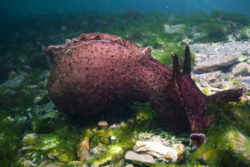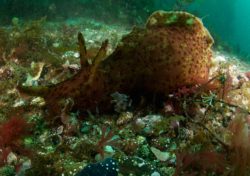
Sea Wonder: Sea Hare

Sea Hare in Monterey Bay National Marine Sanctuary. Photo: Chad King/NOAA
Sea hares are not long-eared mammals adapted to live in sea water but are actually a family of marine snails or sea slugs named for the tentacle-like organs atop their heads that resemble the long ears of a hare. Its simple nervous system structure and physiological features make the sea hare a useful model species in important scientific research related to learning and memory in more complex animals – especially humans!
Description
Despite being a marine snail, sea hares have small, internal shells and no external shell, which suggests these animals have evolved to not need one to survive but haven’t quite gotten rid of it altogether. Sea hare species are usually pretty small, with lengths of between three and 14 inches when fully grown, and an average adult length of about seven inches. Their colors and patterns vary based on what they eat, but the range includes red-purple, green, and brown. The ear-like structures on their heads are called rhinophores, used for detecting taste from molecules in the water current. They also have oral tentacles near their mouths used for foraging.
Like other sea slugs, sea hares have a head, mantle (main body), a single gill for respiration, a “foot” used for locomotion, and a siphon used to direct water out of the mantle cavity.
Diet & Habitat
Sea hares live in coastal waters where marine plant growth is plentiful, which means shallower areas near rocky shores or in seagrass beds – anywhere that is protected from the stronger, riskier open ocean currents that could carry them away. They are found in most marine waters and throughout the National Marine Sanctuary System including Channel Islands, Monterey Bay, and Florida Keys national marine sanctuaries. The California brown sea hare (Aplysia californica) is especially abundant around the California Coast as their name suggests.
They feed on algae and seagrass, keeping these marine plants in balance and preventing overgrowth, which depletes oxygen from the surrounding water and can lead to increased levels of toxins produced by algal blooms. Sea hare predators include lobsters, starfish, and larger gastropods. To defend themselves from attacks, sea hares can release two kinds of ink from their mantle cavities and their siphons.

California Sea Hare in Channel Islands National Marine Sanctuary. Photo: Tony Knight
Life History
Sea hares have an average life span of one year, which starts when they hatch from their egg casings and start their lives as larvae. They reach maturity around two months of age and reach their reproductive peak around seven months. Sea hares are hermaphrodites, meaning they can function as both male and female during mating. During the breeding season (usually when their home waters are warmer and food is plentiful), they mate in large groups, lined up, with the opposite sex one after the other, creating long chains of 20 or more individuals. Each individual can produce millions of eggs arranged in strands that look like pink or green spaghetti, which hatch about two weeks later.
Threats & Conservation
Sea hares are not listed as threatened or endangered, though they are at risk of decline due to ocean acidification, climate change, and coastal development. They have important roles in their ecosystems by grazing on seaweed and algae, keeping these marine plants in balance so other species can exist and thrive. Without enough of them, overgrowth and ecological imbalance is a serious concern, which can lead to consequences that have effects on human society, including changes in seafood availability, water quality, and partial ecosystem collapse. They might not be the cutest animal in the sea, but it’s important to protect them and their habitats just the same!
